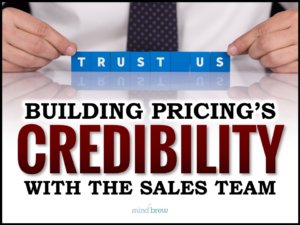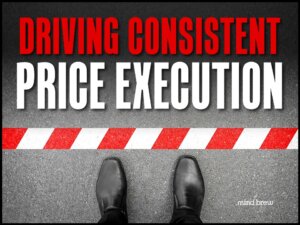In our Making Sense of Artificial Intelligence for B2B Pricing training session, we discuss the different “flavors” of artificial intelligence that are available to pricing practitioners today. From more traditional predictive modeling and machine learning to the massive neural networks now garnering all of the headlines, there’s no shortage of technologies that can help produce a set of accurate or even optimized price-points.
But is generating accurate price-points really the end game? Is that really all there is to it? In B2B, it’s not even close.
In B2B, accurate price-points are necessary, but insufficient. In complex, multi-stakeholder environments, you’ll almost always have to explain and defend those price-points to other people—sales managers, account teams, channel partners, product managers, and maybe even the customers themselves. And when someone inevitably asks, “Hey, why is the price set here instead of there?” you can’t just shrug your shoulders and proclaim, “Because the AI said so!”
And this is where the different “flavors” of AI really start to matter…
Traditional AI approaches like regression analyses, decision trees, attribute-based segmentations, and machine learning models will tend to be more transparent. They may not be simple, but they aren’t a “black box.” You can point to the factors being considered, explain the relative weightings involved, highlight the historical performance predicates, and walk through the logic being used to produce the pricing recommendations thru traditional AI.
Generative AI, on the other hand, is a very different beast.
While the large neural networks at the core of GenAI are incredibly powerful, they’re also notoriously opaque. In many cases, even the developers themselves aren’t able to fully explain how a GenAI model arrives at a particular output. So if the people building the system don’t know exactly how the sausage is being made, what chance do you have of explaining it to a skeptical VP of Sales who thinks the numbers are too high, too low, or just plain wrong?
The ability to explain your prices clearly, credibly, and in terms that make sense to the various stakeholders involved isn’t just a “nice to have” in B2B environments. It’s essential. If you can’t do it, no one will ever take your pricing recommendations seriously. In B2B, it’s just not enough to have the right answer. You need an accurate answer that you can also explain, defend, and sell internally before it will ever make its way through to a customer conversation.
In the Making Sense of Artificial Intelligence for B2B Pricing session, we emphasize the point that recognizing these dynamics should definitely influence our decisions about which flavors of AI to use and for what purposes. And all things considered, we’ll want to lean toward the more traditional AI approaches when it comes to generating price-points for real-world consumption in B2B environments.
Why? Not because traditional AI is inherently more accurate than generative AI. In fact, the accuracy difference between TradAI and GenAI may be negligible at the end of the day. No, the real advantage is that the underlying processes behind TradAI tend to be much more understandable and explainable.
When you can walk a sales manager through the logic—i.e. “We segmented by these customer, product, and order attributes, and we set start, target, and floor prices based on the historical distributions of realized prices within those segments,”—you’re not just delivering a set of numbers and expecting blind compliance. You’re building trust in the processes that produced those numbers. And that trust is what will ultimately turn the recommendations into reality.
Again, as a B2B pricing practitioner, your job isn’t just to find the “right” numbers. You also have to make those numbers stick. And in environments where many others are influencing and executing pricing decisions, making the numbers stick requires more than statistical precision. It requires clarity, credibility, and in many cases, the ability to show your work.
So by all means, learn all you can about the different flavors of AI and how they’re being used toward various pricing problems and commercial applications. Test the new models and approaches for yourself. Explore the possibilities, broaden your scope of knowledge, and push the envelope. The more you know about AI, the better prepared you’ll be for whatever the future holds.
Just never lose sight of the fact that the most accurate prices in the world are of little use when you can’t explain them well enough for others in your organization to believe in them and act on them.
















